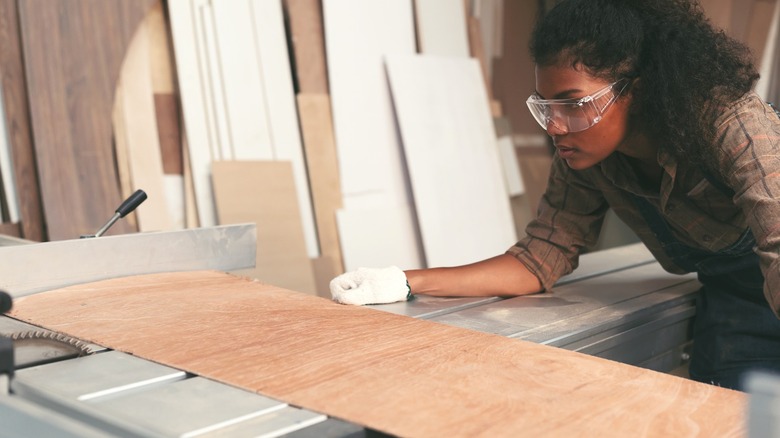The Budget-Friendly DIY Shelf That's A Designer Dupe For A Fraction Of The Cost
It's no surprise that the most unique and eye-catching décor pieces often cost a pretty penny, and most of us won't begrudge anyone charging more for quality. Unfortunately, premium prices can also leave many deserving amateur designers feeling left out. As much as we could use them, we can't all shell out for top-end items. Still, that shouldn't mean you're prohibited from the look you deserve. When the piece is perfect but the price is anything but, it might be time for a DIY knockoff. And as YouTube channel TheSorryGirls reveals, you can save a ton by faking a designer shelf for stylish and affordable storage.
The Kartell Bookworm Bookshelf certainly grabs your attention with its versatile bending form. The piece can flex, spiral, and wave in limitless shapes, with attached bookends keeping your items in place. Even more astonishing than the look, though, is the price, with some vendors breaking the $1,000 mark for longer versions of this scrolling PVC shelf. It's hard to justify that kind of expense. But for handy home designers, a quick look reveals tons of potential to make this a budget-friendly DIY bookshelf project that will inspire readers. A successful recreation all comes down to the materials. For TheSorryGirls, flexible plywood was the perfect solution for a bending shelf, offering the added benefit of a paintable, sustainable surface. Typically available in 4x8 sheets, you can rip one plywood piece to give you up to 48 feet of 7.9-inch-deep shelving, matching the Kartell unit's style without the cost!
Building your low-cost, high-end DIY shelf
In their build, TheSorryGirls cut wood sheets to the desired width and join the ends to create a long shelving run. Since flexible plywood bends easiest against the grain, note the grain orientation to ensure you're ripping your boards in the right direction. With your pieces cut, combine them with simple lap joints and wood glue for a strong, seamless transition between pieces. You can then test different shelf shapes and choose the best arrangement for the bookends that attach the shelf to the wall and keep your books and accessories in place. The bookends are square boards about 7 inches long. Space them every 1½ feet or so along the shelf, keeping them on whichever side of the plywood allows them to hold items.
TheSorryGirls secured the finished shelf by drilling pocket holes through the bookend boards that can be screwed into the wall. Since you likely won't hit studs with every angled piece, keep some wall anchors handy to ensure a stronger support when drilling only into drywall. Before attaching them to the wall, though, you need to screw the bookends into the shelf and complete the build. Simply drill screws through the thin plywood and into the edge of the bookend. Line up a bookend over any joints where two shelves meet so you can screw the lapped pieces together for a tighter hold. Finish by picking the perfect shade of paint, installing your shelf on the wall, and filling your new display with your favorite decorations.
